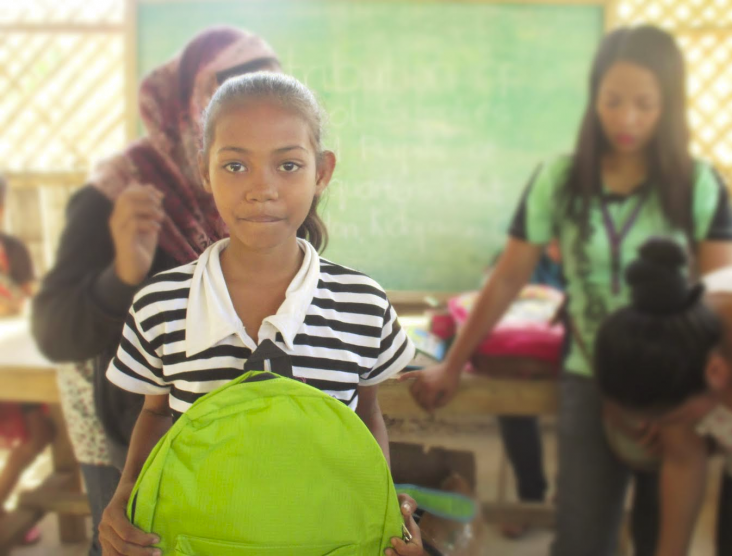Speeches Shim

May 2017—In Maguindanao and North Cotabato, two provinces in the Philippines’ southern Mindanao region, pervasive instability due to violent extremism, poverty and underdevelopment prevents many children from obtaining a basic education.
Armed conflict forces families to evacuate from their homes, and recurring power outages cause schools to suspend classes. Meanwhile, many rural families cannot afford to send their children to school. As a result, many young people do not fully learn to read or write.
Reyhana Endigay, age 10, has never attended formal education. Until this year, she could not write her name.
Aside from living in a challenging environment, Reyhana is also deaf. Because of her condition, Reyhana’s parents kept her from school. “She might be bullied by classmates for being different,” says her mother, Babo Bai.
While the Philippine Department of Education works to improve access to quality education in areas affected by conflict, the Integrated Mindanaoans Association for Natives (IMAN) is complementing that work through its USAID-supported Innovation for Rural Advancement project.
USAID awarded a $360,000 grant to IMAN in August 2015 to establish alternative learning sites in strategic locations for children to gain literacy and numeracy skills. The grant is part of USAID’s Philippine-American Fund, which helps local Philippine organizations like IMAN to carry out solutions for various challenges in the country. The fund also helps grantees better manage their finances and performance to become more self-sufficient.
Project staff teach classes using the local Maguindanao dialect, and they engage the community for support. Madrasah (Arabic schools) and barangay (village) halls offer their buildings for learning spaces. Parents prepare meals and snacks. Local governments lend chairs and tables. Meanwhile, the Department of Education monitors students’ attendance and progress.
When Reyhana’s parents heard about the project, they saw it as an opportunity for her to attend school with her peers. Their daughter was soon going to class every day. “Reyhana insists on going to her classes. She tugs at my clothes every morning to urge me to accompany her to school,” says her mother.
Norma Sulaiman, a community facilitator, teaches lessons in sign language for Reyhana. “She is different—her difference being her willingness to learn,” Sulaiman says.
Reyhana and her classmates are developing self-esteem and creativity by learning how to make decisions, solve problems and be responsible. Workshops and games promote a culture of peace, where the children learn to tolerate their differences, treat each other with respect, and resolve conflicts.
Today Reyhana can read and write. She is more confident and has new friends. “Without this program, we would have given up on providing the education she needed,” her mother says.
Equipped with a quality education and essential life skills, Reyhana is one of nearly 400 students who can now look forward to a brighter future, where they can take advantage of more opportunities and model peace and stability in their homes and communities.
LINKS
Follow @USAID_Manila, on Facebook, on Flickr, on YouTube

Comment
Make a general inquiry or suggest an improvement.